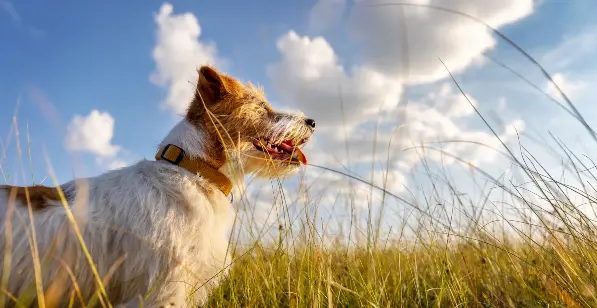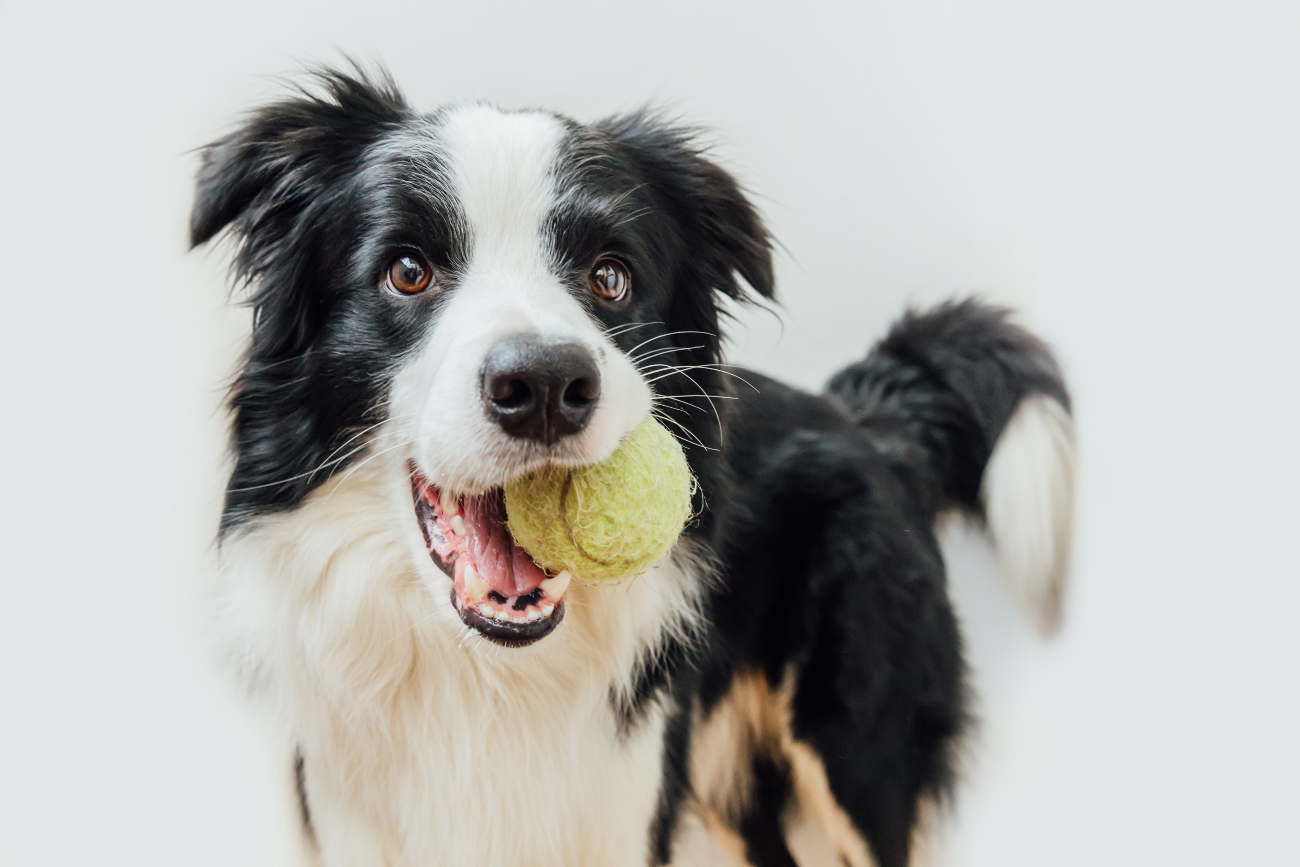The colourful world of dogs: Understanding canine vision
2nd January, 2024

Despite the common assumption that our canine companions navigate their world in black and white, recent research has revealed that dogs do, indeed, perceive colour, albeit differently than humans. So, in response to the question, "what colours can dogs see?", the answer is a bit more complex than one might initially assume.
Dogs' colour perception is dichromatic, meaning they see the world predominantly in shades of blue and yellow. This article explores the intricacies of canine vision, delving into the science of how dogs perceive colours and how this knowledge can be beneficial for pet owners.
The intricacy of colour perception: A primer
Before we delve into the specifics of what colours dogs can see, let's first unpack the science behind colour perception. Colour is discerned by specific nerve cells in the eye's retina.
The retina houses two primary types of cells - rods, which detect motion and light levels, and cones, which differentiate colours.
Humans have three types of cones that can recognise combinations of red, blue, and green, giving us the ability to perceive a broad spectrum of colours, including intermediate hues.
Dogs, contrastingly, have only two types of cones, capable of discerning blue and yellow. This limited colour perception is known as dichromatic vision.
The colour spectrum: Dogs vs humans
While human eyes can discern a wide array of colours, dogs' dichromatic vision allows them to see a more limited spectrum.
Dogs perceive variations of blues and yellows, but red and green hues are problematic. For dogs, red appears as a dark brownish-grey or even black, while yellow, green, and orange all manifest as various shades of yellowish-brown.
On the other hand, dogs excel in perceiving shades of blue. Interestingly, dogs perceive purple as another shade of blue.
Therefore, if you're playing fetch with your dog, they might struggle to distinguish between a red or green ball on the grass, as those colours look similar to them. But a blue toy would stand out clearly, making the game more enjoyable for your furry friend.
Illuminating the darkness: Dogs' superior night vision
While dogs may lag behind humans in colour perception, they have us beat when it comes to seeing in low light conditions. Dogs evolved as nocturnal hunters, and their vision adapted to excel in dim light and detect motion swiftly.
Dogs have larger lenses and corneal surfaces, a reflective membrane called a tapetum that enhances night vision, and a higher concentration of rods in their retinas.
These adaptations make dogs superior to humans in detecting motion and seeing in dim light or dusk and dawn conditions, thereby enhancing their hunting abilities.
Peripheral vision: Dogs' panoramic view of the world
Another impressive facet of dog vision is their superior peripheral vision. Thanks to their eyes' positioning on the sides of their heads, dogs have a field of view extending to 240 degrees, offering them an almost panoramic view of their surroundings.
This capability far outstrips humans, who have a field of view limited to 180 degrees. This enhanced peripheral vision allows dogs to spot things that we might miss without turning our heads.
The best colours for dog toys
Understanding what colours dogs can see best can inform your choice of toys for your furry friend. Considering dogs' dichromatic vision, toys in shades of blue and yellow are most likely to catch their attention.
Red or orange toys, while popular among pet owners, may be less appealing to dogs, as these colours appear as indistinct brownish hues to them. So, next time you're shopping for your pup, consider opting for blue or yellow toys to make playtime more engaging for them.
What colour is grass to dogs?
Ever wondered what your canine companion actually sees when they're playing fetch in the park or eating the grass? You may be surprised to find out that the lush green grass beneath their paws doesn't look quite the same to them.
So then, what colour is grass to dogs? Dogs don't see the world the same way humans do.
They perceive colours on a blue and yellow scale, rather than seeing the full spectrum of colours we do. This is because dogs have two types of colour receptors, or cones, in their eyes, compared to humans who have three.
As a result, the vibrant green grass that we see appears as a blend of yellow and blue hues to our furry friends. It's not quite as colourful as our perception, but it's still a fascinating insight into how our pets view their environment.
What colours can dogs not see?
It's often believed that dogs see in black and white, but that's not entirely true. Dogs can indeed see colours, just not as many as we can.
They have red green colour blindness, seeing these colours as shades of grey instead. In fact, their world is much like a television set to grayscale, with a dash of blues and yellows.
Can dogs see in the dark?
While dogs do have superior night vision compared to humans, their colour perception in low light conditions is likely similar to their daytime vision.
Dogs would still be able to discern variations of blue and yellow in dim light, but the overall dog's vision might be less sharp and more reliant on detecting movement and contrasts in light levels.
Applying this knowledge: Enhancing your dog's life
Understanding dog vision and what colours dogs can see can have practical applications for pet owners. For example, if you're training your dog to differentiate between two toys, using one blue and one yellow toy can make the task easier for your pet. Similarly, when playing fetch, opt for a blue or yellow ball to make it easier for your dog to spot.
Moreover, if you're a pet owner considering dog insurance, understanding your dog's unique needs and traits, such as their vision capabilities, can help you make informed decisions about their health and welfare.
To get a dog insurance quote for your furry friend, you can get a quote through our website. If you would like to talk to one of our dog insurance team, you can get in touch with us on 0330 102 5748.
Embracing the colourful world of dogs
While dogs may not see the world in the vibrant technicolour that humans do, their vision is perfectly adapted to their needs and evolutionary history. Their ability to discern variations of blue and yellow, coupled with their superior night vision and peripheral vision, enables them to navigate their world effectively.
As pet owners, understanding our dogs' unique visual capabilities allows us to better cater to their needs and enrich their lives. So next time you look into your dog's eyes, remember the colourful world they see may not be the same as yours, but it's equally fascinating.
Helpful Pages
Recent Posts
Pet Insurance Quote
- 98% claims paid *
- Claims paid directly to vets
- 24/7 vet video consultations
- Interest free monthly payments




